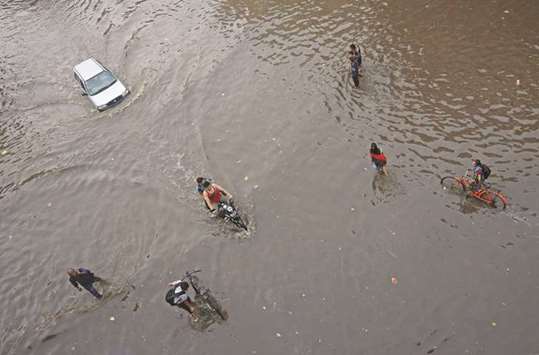Monsoon will hit the national capital between June 29 and July 1, with pre-monsoon activities expected to begin next week, bringing a much needed respite for Delhi which is currently reeling under heat wave conditions.
According to both India Meteorological Department (IMD) as well as private weather forecasting agency Skymet, Delhi will see on-time arrival of monsoon. However, the rainfall in Long Period Average (LPA) is not yet clear.
“The onset of northwest monsoon is expected to be between June 29 and July 1 for Delhi. The pre-monsoon showers can be expected around June 27,” M Mohaptra, senior scientist at IMD, said.
While Skymet prediction also expects monsoon to arrive after June 29, it sees the pre-monsoon showers to hit the national capital from today.
The monsoon’s course had been subdued for over a week. However, from yesterday, it has revived and started moving towards the north, weather analysts said.
“Monsoon has revived and is moving northwards. It has already reached parts of Gujarat, western Madhya Pradesh, Vidharbha, Odisha and West Bengal,” Mahesh Palawat, director of Skymet said.
He added that the revival of monsoon towards north was a great indicator that Delhi will receive on-time monsoon rains beginning “this week”.
Till the first two weeks of June, monsoon rainfall was 19% surplus, but after June 13, they reduced to a deficit of 4% till June 19. However, even when subdued, heavy rainfall activity continued along the western coast and parts of northeastern states.
According to the IMD, India is likely to receive a “better monsoon” than it did in 2017, with the entire country expected to see “normal rainfall” between 96 to 104% from June to September.
In 2017, the country received 97% rainfall, which is considered normal. Earlier the IMD said India in 2018 is, quantitatively, likely to receive 97% rainfall of LPA with error estimate of plus-minus 4%.
The National Highways Authority of India (NHAI) has installed 40 pumps across the Delhi-Gurgaon Expressway to prevent waterlogging during the monsoon.
The pumps, which can clear up to 7,200 litres of water every minute, have been strategically placed at the newly built underpasses at Rajiv Chowk, Iffco Chowk, Signature Towers and Hero Honda Chowk. These stretches went under water during the monsoon in 2016, triggering a 48-hour-long gridlock in the city.
The NHAI carried out a few mock drills over the last one week by using fire engines to first flood the underpasses. “The pumps managed to successfully clear water from the affected area during the drill,” said Ashok Sharma, project director of Delhi-Gurgaon Expressway.
He, however, said that the highways authority would have been even better equipped to deal with any situation had the work expanding the Khandsa drain been completed.
The number of pumps has been increased from 21 last year, as NHAI wants to ensure that the movement of vehicles is not hampered at key intersections. The pumps are automatic and would become functional as soon as the underground sump tanks are filled with rainwater.

People wade through a flooded road after heavy rains in Ahmedabad yesterday.
